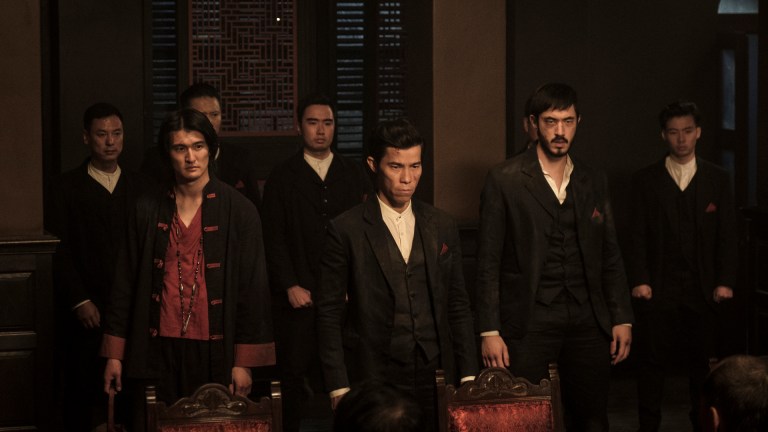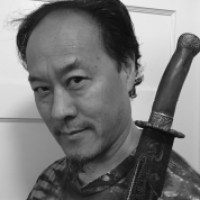Warrior: The Real History of the Race Riot that Shook San Francisco
In the penultimate episode of Season 2, Warrior recreates the San Francisco Riot of 1877.

This article contains Warrior spoilers.
In “Enter the Dragon,” the ninth episode of Season 2, Warrior rips a page out from history with its depiction of San Francisco Riot of 1877. On July 23, two nights of racial violence tore through Chinatown, killing four and destroying over $100,000 worth of Chinese-owned property. In Warrior there’s a much higher body count, but the show is “historical fiction” and never set out to be entirely accurate.
According to Warrior’s head writer Jonathan Tropper, “What’s important to us are the themes and the characters of the truths of the racism and the difficulty of the immigrant experience at that time. We’re taking all of our inspiration from historical characters and events, but we’re not telling a any kind of docudrama level, historical story.”
Race Riot in the City of Angels
The San Francisco riot was preceded by other attacks on Chinese Americans in a what is known as the “Driving Out.” In another Californian riot, the Chinese Massacre of 1871 happened in Los Angeles on October 24 when a mob of around 500 white and Hispanic rioters struck in Old Chinatown after hearing that a policeman was shot, and a rancher killed by a Chinese. It is estimated that 20 Chinese were lynched (although a few were shot dead prior to being hanged). In 1850, Los Angeles had a proportionally high number of lynchings for its size.
Like in Warrior, the Los Angeles massacre was traced to a rivalry between two Chinatown tongs, but instead of the Hop Wei and the Long Zii, they were real tongs: the Hong Chow and the Nin Yung. Prostitution was rampant in Chinatown, an aspect that Warrior depicts with disturbingly accuracy, and Chinese women were commonly kidnapped and sold into sex slavery. Local police might attempt to rescue these women and return them for a fee. The abduction of a woman named Yut Ho sparked a feud between the Hong Chow and the Nin Yung and the policeman and rancher got caught in the crossfire.
Ten men were prosecuted and eight were convicted of manslaughter for the lynchings, however the convictions were overturned due to “technicalities” after an appeal. In 1863, California law made it so that Asians could not testify against whites in court. That made Chinese easy targets for racial injustice by the time that these anti-Chinese attacks began occurring.
Other Chinese massacres took place in the wild west. There was the Rock Springs Massacre in Rock Springs, Wyoming in 1885. That left nearly 30 Chinese dead and many homes destroyed. The government did offer some restitution for property loss, but no one was ever arrested or held accountable for the bloodshed. In 1887, same year as the San Francisco riot, there was the Hells Canyon Massacre in Oregon. Some 34 Chinese gold miners were killed. Again no one was ever held accountable. In 2005, the site was renamed Chinese Massacre Cove.
Race Riot in the City by the Bay
Starting in 1873, the United States suffered the “Long Depression,” which was originally called ‘The Great Depression’ until the 1930s when another economic depression usurped the title. Unemployment levels were staggering across the nation and this was long before the U.S. had established any government protections for the unemployed. The Long Depression carried on throughout the 1870s, the period in which Warrior is set. In Episode 17 “If You Wait by the River Long Enough…” the Panic of ’73 is mentioned. That panic was the historic catalyst for the Long Depression.
San Francisco was hit hard. Unemployment was up to 20% and the Bank of California had failed. On July 23, 1877, a labor strike led by the Workingmen’s Party rallied in a vacant lot – nicknamed a ‘sand-lot’ – near the newly established City Hall of San Francisco. The Workingmen’s Party was founded in 1877 and is often confused with the Workingmen’s Party of the United States (WPUS) which was founded around the same time. The WUPS changed its name soon after to the Socialist Labor Party and it is the oldest socialist political party in the United States.
The Socialist Labor Party still active and is currently headquartered in Mountain View, California, about 30 miles south of San Francisco. The San Francisco Workingmen’s Party, more formally known as the Workingmen’s Party of California eventually rose to enough power to rewrite the state’s constitution. The sand-lot meeting was just the beginning.
Some 8000 people showed up to that fateful sand-lot gathering strike. Initially, blaming the Chinese was not part of the platform. But then an anti-coolie procession pushed their way in, demanding to be heard. The crowd on the outskirts of the gathering turned on a Chinese passing by, attacking him, and shouting the rallying cry “On to Chinatown!” That launched the San Francisco Riot of 1877.
The mob destroyed property, mostly Chinese laundries. That old stereotype of Chinese laundries was based in fact. Laundry work was difficult prior to industrial washing machines and considered unmanly, but the Chinese were willing to do it. In 1880, San Francisco had some 200 Chinese laundries. The laundries were obvious targets, along with any challengers or bystanders that crossed the mob’s path.
The next morning, the rioting grew. One of the mob organizers placed an ad in the local newspaper that said “RALLY! RALLY! Great anti-coolie Mass Meeting at the New City Hall, Market street, at 8 o’clock p.m.” On July 24, the Beale Street Wharf was set aflame. From 1872 to 1907, the Beale Street Wharf was the city’s largest coal dock, and arsonists stoked the fire with 100 barrels of whale oil. However, it was a diversion to draw the city’s emergency resources away from downtown and Chinatown, where the riots would continue. That fire caused some $500,000 worth of damage and lost goods.
When the mob marched on Chinatown, the Chinese houses in their path had been listed and were complete sacked. Wooden sidewalks were torn up to be used as battering rams. Homes were robbed. Laundries were burned. People were shot. The rampage lasted for two days until it was finally quelled by the combined forces of the SFPD, the California militia, and a thousand members of the Pick-Axe Brigade, a citizen vigilance committee that armed themselves with hickory pick-axe handles. Special 24-hour badges were issue by the SFPD to civilians willing to help. And the police were eager to break out their newly issued police batons, which according to the San Francisco Bulletin were “more effective than any other instrument in the business of skull-cracking.”
The Match that Lit the Fuse
The end of riot was not the end of anti-Chinese sentiments. Quite the opposite, it was just the beginning. Denis Kearny was one of the agitators from the Workingmen’s Party who participated in the sand-lot rally and the riot. He emerged as political leader for the anti-Chinese and anti-capitalist movement, pushing the slogan “The Chinamen Must Go.” Anti-Chinese sentiment kept growing in the United States, culminating in the Chinese Exclusion Act in 1882 which banned the immigration of Chinese laborers. It remains the only such law to prohibit a specific ethnic group or nationality ever established in the United States and it wasn’t repealed until 1943. However, Chinese immigrants were still restricted to only 105 per year for the entire country. This was upheld until the Immigration and Nationality Act of 1965.
Warrior has been moving towards the Chinese Exclusion Act throughout the show. It has been brought up several scenes set in San Francisco’s political arena, especially by Buckley (Langley Kirkwood), who has made this Act the focus of his manipulative agenda. Recently there has been rise in anti-Chinese sentiment in the United States as the nation has become more racially divided. Extremists have blamed the pandemic on the Chinese, calling it the China flu or the Kung flu, and attacks on Chinese Americans have been increasing in many major metropolitan cities across the nation. Warrior has been hitting eerily close to home with its depictions of history and its comments on the ramifications.
Here is where Warrior captures the spirit of Bruce Lee the best. Martial arts aside, Lee transcended race to become one of the world’s greatest icons. In his famous interview by Pierre Berton, Lee was asked if he thought of himself as Chinese or North American. His reply was timeless, “I think of myself as a human being, because under one sky we are but one family, it just so happens we look different.”
As writer and philosopher George Santayana said, “Those who cannot remember the past are condemned to repeat it.” Even though it is fiction, Warrior‘s insightful Easter Eggs of these darker times in American history. It reminds us to honor the diversity of our great nation and remain united as Americans.
